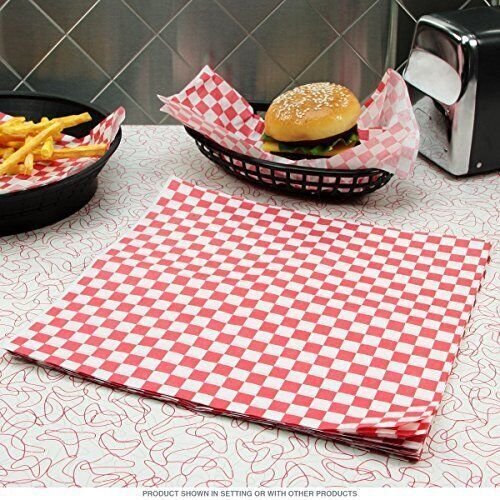Saudi Arabia Furniture Market Report 2024-2032: Trends, Growth Drivers, and Future Outlook
According to the report by Expert Market Research (EMR), the Saudi Arabia furniture market is projected to grow at a compound annual growth rate (CAGR) of 6.2% from 2024 to 2032. This growth is supported by several factors, including rapid urbanization, an expanding middle class with increased disposable income, and the rising demand for home renovation and interior design services. The ongoing construction boom, particularly in residential and commercial sectors, further fuels the demand for various types of furniture, creating a conducive environment for market expansion.
As the population becomes more urbanized, the demand for furniture that meets modern aesthetic and functional requirements has surged. Consumers are increasingly seeking out stylish, high-quality furniture that reflects their personal tastes and enhances their living spaces. This trend is particularly notable among younger consumers who prioritize contemporary designs and multifunctional furniture solutions, driven by the rising trend of compact living spaces.
In addition to residential demand, the commercial sector, encompassing hotels, restaurants, and offices, is experiencing a significant uptick in furniture requirements. The government’s initiatives to boost tourism and hospitality as part of the Vision 2030 plan are leading to increased investments in the hospitality sector, subsequently driving the demand for stylish and durable furniture.
Moreover, the advent of e-commerce has transformed the furniture shopping experience in Saudi Arabia. Online platforms have made it easier for consumers to explore a wide range of products and compare prices, contributing to a more competitive market landscape. Retailers are adapting by enhancing their online presence and offering exclusive deals to attract tech-savvy consumers.
As the market evolves, manufacturers and retailers are also placing a greater emphasis on sustainability. With an increasing awareness of environmental issues, consumers are gravitating towards eco-friendly materials and sustainable manufacturing practices. This shift is pushing furniture companies to innovate and adopt greener practices to remain competitive and meet consumer expectations.
Get a Free Sample Report with a Table of Contents: https://www.expertmarketresearch.com/reports/saudi-arabia-furniture-market/requestsample
Market Segmentation
The Saudi Arabia furniture market can be divided based on type, distribution channel, and region.
Market Breakup by Type
- Residential Furniture
- Living Room Furniture
- Bedroom Furniture
- Kitchen Furniture
- Office Furniture
- Commercial Furniture
- Hospitality Furniture
- Office Furniture
- Retail Furniture
Market Breakup by Distribution Channel
- Offline
- Specialty Stores
- Department Stores
- Supermarkets and Hypermarkets
- Online
- E-commerce Platforms
- Brand Websites
Market Breakup by Region
- Central Region
- Western Region
- Eastern Region
- Southern Region
Read Full Report with Table of Contents: https://www.expertmarketresearch.com/reports/saudi-arabia-furniture-market
Competitive Landscape
The EMR report examines the market shares, product portfolios, strategic initiatives, and key developments of leading companies operating in the Saudi Arabia furniture market. Some of the major players identified in the report include:
- IKEA Saudi Arabia
- Home Centre
- Pan Emirates
- Al-Muhaidib Furniture
- SACO (Saudi Arabian Company for Hardware)
- Extra Stores
- Hawkins Furniture
- Royal Furniture
- Furnishers
- Others
Key Trends and Drivers
Urbanization and Population Growth
Saudi Arabia’s rapid urbanization, with a significant portion of the population moving to urban areas, is a primary driver of the furniture market. As people relocate to cities, the demand for residential furniture increases, particularly in new housing developments and apartments. The rising population also contributes to the growing need for diverse furniture options catering to different styles and preferences.
Growing Middle Class and Disposable Income
The expanding middle class in Saudi Arabia, coupled with increased disposable income, is influencing consumer behavior towards premium furniture products. This demographic shift has resulted in a demand for higher quality and stylish furniture that reflects individual tastes and lifestyles. Consumers are now more willing to invest in furniture that enhances their living environments, paving the way for growth in the market.
Construction and Real Estate Development
The Saudi government’s investments in infrastructure and real estate development have led to a construction boom, especially in the residential and commercial sectors. This growth provides a significant opportunity for furniture manufacturers and retailers as they cater to the furnishing needs of newly constructed properties. The Vision 2030 initiative, which aims to diversify the economy and boost tourism, also plays a crucial role in enhancing the real estate landscape, subsequently impacting the furniture market.
E-commerce Expansion
The rise of e-commerce platforms has transformed the way consumers shop for furniture in Saudi Arabia. With the convenience of online shopping, consumers can explore various styles, brands, and price ranges without the constraints of physical store hours. This trend is encouraging furniture retailers to enhance their online presence, offer exclusive online deals, and invest in digital marketing strategies to reach a broader audience.
Sustainability and Eco-friendly Practices
As environmental awareness grows among consumers, there is a marked shift towards sustainable furniture products. Companies that adopt eco-friendly materials and practices are gaining a competitive edge in the market. From sourcing sustainable wood to implementing recycling initiatives, brands are increasingly aligning their business strategies with consumer values focused on sustainability.
Customization and Personalization
Consumers in Saudi Arabia are increasingly seeking personalized furniture solutions that cater to their unique preferences and requirements. Retailers that offer customizable options, such as tailored sizes, colors, and designs, are likely to attract a broader customer base. This trend reflects a shift in consumer priorities towards creating personalized living spaces that reflect individual tastes.
Challenges
Economic Fluctuations
While the Saudi furniture market is poised for growth, economic fluctuations can pose challenges. Changes in oil prices, government spending, and overall economic conditions may impact consumer spending power and confidence. Manufacturers and retailers must remain agile and adapt to these economic shifts to maintain their market position.
Competition from International Brands
The Saudi furniture market is witnessing increased competition from international brands, which may offer a wider range of products and often at competitive prices. Local players must differentiate themselves by emphasizing quality, local craftsmanship, and customer service to compete effectively.
Supply Chain Issues
Global supply chain disruptions can significantly impact the furniture market in Saudi Arabia. Delays in sourcing materials, shipping, and distribution can lead to increased costs and longer lead times for retailers and manufacturers. Businesses must develop resilient supply chains and diversify sourcing strategies to mitigate these risks.
Future Outlook
The future of the Saudi Arabia furniture market appears promising, with several growth opportunities on the horizon. As the economy diversifies and the population continues to urbanize, the demand for innovative and stylish furniture is expected to rise.
Innovation and Technology
As technology advances, furniture manufacturers are increasingly integrating smart technology into their products. From furniture with built-in charging stations to smart home integration, the incorporation of technology is set to redefine consumer expectations. Retailers that embrace these innovations are likely to capture the attention of tech-savvy consumers.
Increasing Focus on Design and Aesthetics
With a growing emphasis on aesthetics and design, furniture companies that prioritize innovation in design are well-positioned for success. Collaborations with designers and artists can lead to unique, trendy pieces that resonate with consumers seeking statement furniture for their homes.
Expansion into Emerging Markets
As the furniture market in Saudi Arabia matures, there may be opportunities for local brands to expand into neighboring regions and other emerging markets. This strategy can enhance revenue streams and capitalize on the growing demand for quality furniture across the Middle East and North Africa (MENA) region.
The Saudi Arabia furniture market is poised for significant growth in the coming years, driven by urbanization, rising disposable incomes, and changing consumer preferences. The competitive landscape is evolving, with local and international players vying for market share. By leveraging trends in e-commerce, sustainability, and innovation, companies can capitalize on the opportunities presented by this dynamic market. As consumer preferences continue to evolve, adaptability and a focus on quality will be crucial for success in the Saudi Arabia furniture market.




